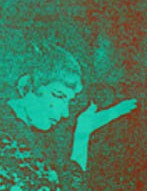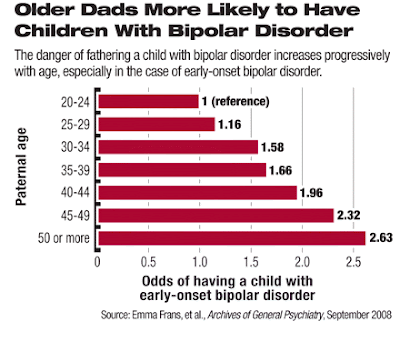Interestingly Great Plains Laboratory actually sell Cholesterol supplements! Might be useful (given what they say on its positive effects on the brain) not just for Autism but for anyone with an egg allergy...
1: Int Rev Psychiatry. 2008 Apr;20(2):165-70.
Autism: the role of cholesterol in treatment.
Aneja A, Tierney E.
Department of Psychiatry and Behavioral Sciences, Division of Child and Adolescent Psychiatry, Johns Hopkins University School of Medicine, and Department of Psychiatry, Kennedy Krieger Institute, Baltimore, MD 21211, USA. aneja@kennedykrieger.org
Cholesterol is essential for neuroactive steroid production, growth of myelin membranes, and normal embryonic and fetal development. It also modulates the oxytocin receptor, ligand activity and G-protein coupling of the serotonin-1A receptor. A deficit of cholesterol may perturb these biological mechanisms and thereby contribute to autism spectrum disorders (ASDs), as observed in Smith-Lemli-Opitz syndrome (SLOS) and some subjects with ASDs in the Autism Genetic Resource Exchange (AGRE). A clinical diagnosis of SLOS can be confirmed by laboratory testing with an elevated plasma 7DHC level relative to the cholesterol level and is treatable by dietary cholesterol supplementation. Individuals with SLOS who have such cholesterol treatment display fewer autistic behaviours, infections, and symptoms of irritability and hyperactivity, with improvements in physical growth, sleep and social interactions. Other behaviours shown to improve with cholesterol supplementation include aggressive behaviours, self-injury, temper outbursts and trichotillomania. Cholesterol ought to be considered as a helpful treatment approach while awaiting an improved understanding of cholesterol metabolism and ASD. There is an increasing recognition that this single-gene disorder of abnormal cholesterol synthesis may be a model for understanding genetic causes of autism and the role of cholesterol in ASD.
PMID: 18386207 [PubMed - in process]
http://www.greatplai...cholesterol.asp"
DEFICIENT CHOLESTEROL:
A COMMON NEW FACTOR IN AUTISMCholesterol supplementation reverses many symptoms of autism in SLOS disorder. This deficiency also common in “regular” autism
- SLOS and Autism
- Lithium deficiency common in mental illness and social ills
- Cholesterol doses to treat SLOS
- Benefits of cholesterol feeding in SLOS
- Cholesterol deficiency
- Benefits of cholesterol in the diet
- Functions of Sonic Hedgehog (SHH)
- Testing for cholesterol
- Why the brain needs cholesterol
- Paulina’s story and cholesterol
- References
Dr. Richard Kelly, a research physician at John Hopkins University has found, along with his colleagues, that autistic symptoms prevalent in the genetic disorder SLOS quickly reversed after supplementation with dietary cholesterol. Some of the many improvements included sleeping through the night, overcoming aberrant behaviors, learning to walk, speaking for the first time and becoming more responsive and social family members. In addition, other benefits of cholesterol supplementation included a decreased rate of infections, reduced skin rashes, marked reduction in self-hurtful behaviors, improved muscle tone, decreased tactile defensiveness, more rapid growth and improved behavior overall. Parents reported their children having significant decreases in autistic behavior and even some adults, without speech, spoke for the first time - all within days of taking cholesterol supplements. These changes occurred before cholesterol values had increased in the blood, which indicates that the improvements may be a result of cholesterol forming its derivatives - such as steroid hormones or bile salts.
SLOS and Autism Smith-Lemli-Opitz syndrome (SLOS) is an autosomal recessive genetic disorder associated with autism, multiple malformations and mental retardation syndrome initially described by Smith Lemli, and Opitz. The syndrome (SLOS) is due to a deficiency of 7-dehydro-cholesterol (7DHC) reductase, the enzyme responsible for catalyzing the final step in cholesterol synthesis indicated in a simplified figure of cholesterol metabolism on page 2. As a result of this enzyme deficiency, 7-dehydro-cholesterol accumulates and the level of cholesterol dramatically decreases. Although some children with SLOS have severe physical abnormalities, many are only mildly affected and autistic behaviors may be their only major abnormality. Since the biochemical test for this disease is done so rarely, it may be possible that there are many other children with SLOS, with fewer anatomic abnormalities, in which the diagnosis is missed. As a result of this enzyme deficiency, individuals with this disorder have extremely low cholesterol values but extremely high values of 7-dehydrocholesterol. One person with SLOS had the lowest cholesterol value (< 1mg/dL) ever measured in serum while most Americans have values between 150-250 mg/dL.
Because cholesterol levels are insufficient in persons with SLOS, virtually none of the normal steroid hormones and bile salts derived from cholesterol can be adequately produced. However, abnormal forms of these hormones derived from 7-DHC can be produced instead. It is important to note that cholesterol is an essential element in myelin, which is the insulating material essential for nerve function (especially in the brain). Persons with SLOS will possess varying degrees of cognitive abilities ranging from borderline intellectual functioning to profound mental retardation. It is common for them to also exhibit sensory hyper-reactivity, irritability, language impairment, sleep cycle disturbance, self-injurious behavior, and autism spectrum behaviors. In one study, nearly 50% of children with SLOS met the DSM-IV criteria for autism. In another study, 86% of children with SLOS had an autistic spectrum disorder. Many of the behavioral abnormalities of SLOS significantly respond to supplementation with cholesterol.
If autism is prevalent in SLOS, and the autistic symptoms improve with cholesterol supplementation, then it is conceivable that any severe biochemical abnormality leading to de-myelination needs to be explored as a possible cause of autism...
Cholesterol doses to treat SLOS Doses of cholesterol used in therapeutic trials have varied from 20-300 mg/Kg body weight/day. In some SLOS treatment studies, supplemental bile acids were also incorporated into the diet. In early studies, 50 mg /Kg of pure crystalline cholesterol was used and showed beneficial results. Other options for cholesterol supplementation include use of egg yolk, whipping cream, and butterfat. A single egg yolk contains about 250 mg of cholesterol. A 100-Kg adult with SLOS would have to consume 40 egg yolks per day to consume enough cholesterol to attain a dose of cholesterol of 100 mg/Kg per day. In addition, organ meats--like liver and kidneys--are particularly rich in this compound. A 3 oz (85 g) serving of beef liver, for example, contains about 372 mg of cholesterol. A similar portion of brain from animal sources has close to triple this amount. In some of the treatment studies, patients with SLOS were dosed with purified cholesterol supplements, instead of food sources.
Benefits of cholesterol feeding in SLOSKelley RT. Inborn errors of cholesterol biosynthesis. Adv Pediatric 2000;47 :1-53
Beginning to walk
Starting to run
Growth improvement
Less infections
Less UV light sensitivity
Increased alertness
Head banging stops
Decreased tactile defensiveness
Increased sociability
Behavior improves
Talking has started in adults who were not talking before
Verbal people say they feel better
Many improvements in only a few days after supplement
Decreased irritability
Cholesterol deficiency: common in regular ASD as well as in SLOS Dr. Tierney and her colleagues involved in SLOS research wanted to determine if cholesterol deficiency is also common in “ordinary” autism. They investigated the incidence of cholesterol deficiency in blood samples from a group of subjects with autism spectrum disorder (ASD) from families in which more than one individual had ASD, but not SLOS. Using highly accurate gas chromatography/mass spectrometry, cholesterol, 7-DHC and its related molecules were quantified in 100 samples from subjects with ASD. Although no sample had values consistent with SLOS, 19 samples (19%) had total cholesterol levels lower than 100 mg/dl, values that are much lower than those found in normal children of the same age. In addition, these researchers found that cholesterol was low, not as a result of excessive breakdown, but because of reduced production.
This work was confirmed at The Great Plains Laboratory which performed cholesterol testing on 40 children with autistic spectrum disorder (see adjoining graph). In this study, as in Dr. Kelly’s study, extremely low cholesterol values are defined as the lower fifth percentile of normal children (less than 100 mg/dL) which was determined in a nationwide study of the Center for Disease Control. The results of the two studies were similar, with The Great Plains Laboratory percentage of extremely low values being 17.5% versus 19% of values being low for the Tierney study. In addition, 57.5% had cholesterol values less than 160 mg/dL. NIH had concluded in 1990 from a meta-analysis of 19 studies, that men and women (to a lesser extent) with a total serum cholesterol level below 160 mg/dL. had approximately a 10% to 20% increased death rate compared with those with a cholesterol level between 160 to 199 mg/dL. Specifically, people with these lower cholesterol levels were more likely to die from cancer (primarily lung and blood), respiratory and digestive disease, violent death (suicide and trauma), and hemorrhagic stroke. It is interesting to note that in The Great Plains Laboratory study, only one child on the autistic spectrum had an extremely high cholesterol level, with a value over 340 mg/dL.
The concept of “good” and “bad” for dietary substances depends on the circumstances of the individual person. Much of the information that the public receives is oversimplified. To a person dying of thirst in the desert, any water is very good. To a person, who just drank two gallons of water on a dare, another glass of water might be fatal. The concept of good and bad cholesterol is similar to the water analogy.
The type of cholesterol that is associated with high density lipoproteins and helps to remove cholesterol from certain tissues was termed “good cholesterol” or HDL cholesterol (High Density Lipoprotein-associated cholesterol). The type of cholesterol associated with low density lipoproteins and which transports cholesterol to tissues that require it was designated as “bad cholesterol” or LDL cholesterol (Low Density Lipoprotein-associated cholesterol). If, however, the tissues of a certain person have a significant overall deficiency of needed cholesterol, then both LDL and HDL cholesterol are good for that person.
Therefore, a purified cholesterol supplement cannot be inherently “good” or “bad” and the body will distribute it to the locations where it is needed the most. If the person has adequate amounts of cholesterol, however, no additional supplementation would be needed.
Abnormalities in cholesterol metabolism present in SLOS and autism may also impair the function of a developmental signaling protein with the bizarre name “sonic hedgehog”. Sonic hedgehog (SHH) is named after the character from the popular Sega Genesis video game. The original hedgehog gene was found in the fruit fly Drosophila and was named for the appearance of the mutant fly offspring in which the embryos are covered with pointy spines resembling a hedgehog. The first two types of hedgehog proteins were named after certain species of hedgehogs and the third was named after the video game character.
Cholesterol must covalently bond to SHH before SHH can function properly. In addition, some forms of SHH have both cholesterol and the fatty acid palmitic acid covalently attached to the protein. (Palmitic acid is required for the production of a soluble Hedgehog protein complex and long-range signaling in humans). The attachment of cholesterol activates the sonic hedgehog protein and without adequate cholesterol, SHH protein function is impaired.
Benefits of cholesterol in the diet Every day supplementation with high cholesterol foods, such as egg yolks, might prove to be a useful therapy to try for a few months for children with autism who have cholesterol values that are low (<160 mg/dL). Unfortunately egg allergy is common in autism and may increase with a steady egg diet and compliance may be difficult for children who dislike eggs. Although very high blood serum cholesterol values are associated with heart disease, values that are low (below 160 mg/dl) are associated with increased violent behavior, suicide, depression, anxiety, bipolar disease, Parkinson’s disease, and increased mortality from cancer. Surprisingly, high cholesterol protects against some infectious diseases like tuberculosis, which has been uncommon in the USA since The Great Depression, during which there was a substantial lack of high cholesterol foods because of financial hardship. Vegetarians have a much higher incidence of tuberculosis than meat eaters. It is possible that the overemphasis on a low cholesterol diet may also be associated with the recent marked increase in cases of tuberculosis. Low cholesterol values are also associated with manganese deficiency, celiac disease, hyperthyroidism, liver disease, malabsorption, and malnutrition. Pregnant women with low cholesterol are twice as likely to have premature babies or babies with small heads.
LDL cholesterol (so-called bad cholesterol) protects humans against infection. Deadly staphylococcus bacteria produce endotoxins that have the ability to kill human cells including red blood cells. LDL was found to protect human red blood cells from this toxic effect of endotoxin while HDL was not protective. A study at the University of Pittsburgh found that in young and middle aged men, those that had LDL-cholesterol below 160 mg/dl had a significantly lower number (of total and various types) of white blood cells than men with LDL-cholesterol above 160 mg/l.
Functions of Sonic Hedgehog (SHH): Plays a central role in developmental patterning, especially of the nervous system and the skeletal system.
Important in the growth and differentiation of a variety of cell types, including the development of T cells in the thymus.
Purkinje neurons secrete SHH to sustain the division of granule neuron precursors in the external granule layer in cerebral development. Abnormal cerebellar development and especially purkinje cell development has been associated with autism.
As a transcription regulating protein, SHH alters which genes function at a given time.
Testing for cholesterol, cholesterol transport proteins, and homocysteine at The Great Plains Laboratory The Great Plains Laboratory has developed a special cholesterol related panel that will help to determine whether cholesterol deficiency or abnormalities in cholesterol transport are present. This panel will include the following markers: Total cholesterol, apolipoprotein A-1, apolipoprotein B, Lipoprotein (a), and homocysteine. Lipoproteins are involved in cholesterol, lipid, and vitamin E transport.
Total cholesterol: Total cholesterol measures all types of cholesterol including esterified and free. Low values (generally values less than 160 mg/dL) are associated with genetic diseases of cholesterol metabolism such as SLOS, Tangier’s disease, and abetalipoproteinemia. Low values are more common in hyperthyroidism, liver disease, malabsorption, malnutrition, autism, violent behavior, celiac disease, anxiety, bipolar disease, alcoholism, lung cancer, suicide, depression, and obesity associated with human adenovirus-36 infection. In China, where mean cholesterol is much lower than in the Western world, chronic hepatitis B virus infection is ubiquitous. Chronic carriers of hepatitis B, but not individuals with eradicated hepatitis B, have significantly lower total cholesterol than non-carriers, suggesting a cause-effect relationship. High cholesterol values are associated with atherosclerosis.
Apolipoprotein A-I (Apo A-1): The main protein component of HDL (high density lipoprotein). It accounts for approximately 65% of the total protein content of HDL. Apo A-I activates lecithin cholesterol acyltransferase which catalyses the esterification of cholesterol. The resulting esterified cholesterol can then be transported to the liver, metabolized and excreted. Values of Apo A-I have been shown to decrease during infection.
Apolipoprotein B (Apo B): The main protein component of LDL (low density lipoprotein). It accounts for approximately 95% of the total protein content of LDL. Apolipoprotein B is necessary for the reaction with LDL receptors in the liver and on cell walls and is thus involved in transporting cholesterol from the liver to the cells. Recently the Mind Institute found that low values of Apo B are associated with autism, with the lowest values being found in low-functioning autism. LDL has found to have protective effects against endotoxins from deadly staphylococcus.
Lipoprotein (a): Consists of two components, the low-density lipoprotein (LDL) and a glycoprotein, which are linked by a disulfide bridge. High values have been implicated as a risk factor for cardiovascular disease, Alzheimer’s disease,Crohn’s disease, and rheumatoid arthritis. Low values have also been found in those with autism who have higher doses of Apolipoprotein E epsilon-4 gene variants that are associated with increased risk of Alzheimer’s disease. Lipoprotein (a) is biochemically unrelated to Apolipoprotein A.
Homocysteine: A sulfur-containing amino acid that can be converted to methionine by methionine synthetase or by betaine methyl transferase. The role of homocysteine in atherosclerosis gained attention after finding massive atherosclerosis in young people with the genetic disorder homocystinuria. Methionine synthetase requires the folic acid derivative 5-methyl tetrahydrofolate. Abnormally high values have been reported in stroke, cardiovascular disease, and in Alzheimer’s disease. Both low and high values have been reported in autism.
All of the Great Plains testing for the cholesterol panel is done with FDA-approved diagnostic laboratory reagents.
Why the brain needs cholesterol There is a direct correlation between the concentration of cholesterol in the brain, particularly in the myelin, and how well the brain functions.
The brain is the most cholesterol-rich organ in the body.
In the central nervous system (CNS), essentially all (99.5%) cholesterol is the free or unesterified form (unattached to fatty acids).
The majority (70%) of cholesterol present in the CNS is believed to reside in the myelin (the material that insulates the nerve fibers) sheaths and the plasma membranes of astrocytes (brain support cells) and neurons.
Half of the white matter, which contains the nerve axons that allow for transmission of brain signals, may be composed of cholesterol-rich myelin."




















































